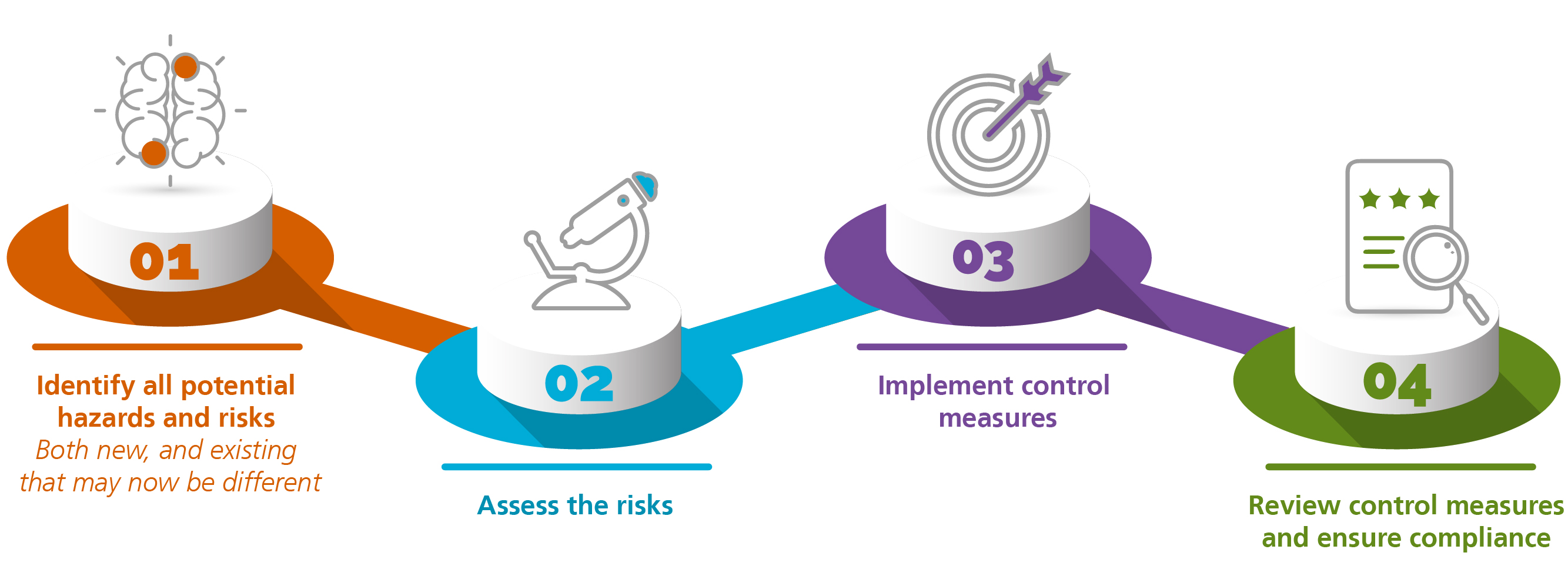Workplace COVID-19 weekly wrap-up
15 May 2020
As the pace of COVID-19 related change in the workplace has slowed and there are fewer significant events to report on, we’ve decided to make our updates a little less regular—so we’ll just be in touch when there’s something important that you need to know.
It is fair to say that the focus now has well and truly shifted to returning to the “new normal”, whatever that may be. We are very excited about the opportunity for workplaces to evolve and we look forward to seeing what that means for both our and our clients’ workplaces as 2020 progresses.
In this update, we set out our four step guide to assist employers to address safety considerations for returning to work and also provide an update on some issues being faced by the Fair Work Commission (FWC), including the first JobKeeper decision.
Finally, as we flagged some weeks ago, NSW has now passed legislation to amend workers’ compensation legislation to presume that a worker who contracts COVID-19 did so in the course of their employment. This automatically entitles employees to workers’ compensation, unless the presumption can be rebutted. We anticipate that other states and territories will introduce similar legislation.
Key issues on the FWC's horizon
The FWC has witnessed an explosion of new applications being made as a result of government restrictions in response to COVID-19. The FWC recorded a 40% increase in the overall number of new applications, a 65% increase in the number of unfair dismissal applications and a 20% increase in the number of general protections claims when compared with April last year. Notably, the FWC has reported that a smaller percentage of these new applications are being concluded via voluntary settlement, reflecting the uncertainty that remains in Australia’s job market.
As a result of the higher case load, and lower proportion of settlements, the FWC is facing an unprecedented number of upcoming hearings. To mitigate the risk of a protracted dispute before the FWC, employers need to be more vigilant than ever to ensure any dismissal process is appropriately handled, documented and in accordance with the Fair Work Act.
Interestingly, only a small number of disputes relating to the JobKeeper scheme have been filed with the FWC—212 applications had been lodged by the end of last week. The first of these decisions was recently published by the FWC.
In that case, Village Roadshow Theme Park stood down a part-time employee. The $1,500 JobKeeper payment doubled her usual fortnightly wage of $750. The employer directed the employee to take one day of annual leave per week, but the employee refused to do so. The employee submitted that the “JobKeeper enabling directions” (such as the ability to direct an employee to take annual leave) was not intended to apply to large businesses, and that the JobKeeper scheme unfairly targeted long-standing employees who had accrued significant leave balances. Under its new powers to hear JobKeeper-related disputes, the FWC found that the refusal was unreasonable. The FWC rejected that the JobKeeper enabling directions was not intended to be available to large business employers.
Also of note is that the FWC explicitly said that the disparity between the employee’s usual wage and the $1,500 JobKeeper payment was not a factor of the decision.
We will continue to keep an eye on these JobKeeper matters as they are published by the FWC and update you with any significant developments.
Returning to work amid the COVID-19 pandemic: a proactive risk management approach
With COVID-19 restrictions easing across Australia, workplaces must prepare for their workers to begin returning to the physical workplace. WHS laws require that the return is conducted in a manner that is safe and without risks to health, so far as is reasonably practicable.
Broadly guided by the National Cabinet’s COVID-19 Safe Workplace Principles, every business and undertaking in Australia must identify, assess and control the risk of COVID-19 transmission within the workplace. However, the obvious and well publicised risks associated with COVID-19 transmission are only one of the many risks that must be identified, assessed and controlled as part of a proactive risk management approach to the return to work.
Our four step approach is designed to help businesses starting to consider the myriad of potential new hazards and risks they may face, without forgetting about the existing risks to health, safety and the environment that have not simply gone away during the pandemic. Risk assessments must be conducted at all times. But they are particularly important when any changes affect work activities – and COVID-19 has seen the biggest ever raft of changes to the modern Australian workplace

 |
Identify all potential hazards and risks – both new and existing (which may have changed)Identify all hazards and risks that might be present as workers begin to return to the physical workplace. Some potential hazards / risks may include:
Remember WHS consultation obligations with employees and other duty holders. |
 |
Assess the risksConduct a comprehensive and rigorous risk assessment for all of the risks identified in step 1.
Remember WHS consultation obligations with employees and other duty holders. |
 |
Implement control measuresIdentify and implement appropriate control measures for each hazard / risk identified and assessed in steps 1 and 2. Some considerations may include:
Remember WHS consultation obligations with employees and other duty holders |
 |
Review control measures and ensure complianceTo ensure implemented control measures remain effective, review and assess measures on a regular basis, including when any state and territory COVID-19 restrictions are changed. Businesses and undertaking must continuously and rigorously assess:
Remember WHS consultation obligations with employees and other duty holders. |



